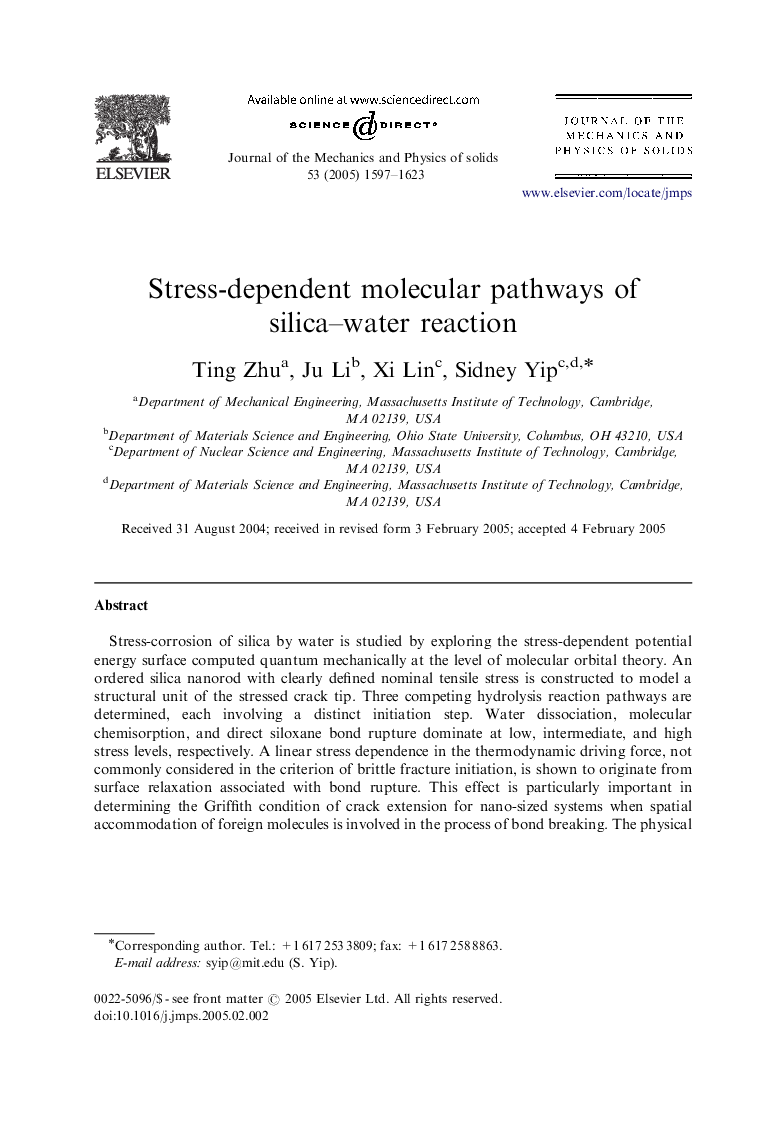| Article ID | Journal | Published Year | Pages | File Type |
|---|---|---|---|---|
| 9711181 | Journal of the Mechanics and Physics of Solids | 2005 | 27 Pages |
Abstract
Stress-corrosion of silica by water is studied by exploring the stress-dependent potential energy surface computed quantum mechanically at the level of molecular orbital theory. An ordered silica nanorod with clearly defined nominal tensile stress is constructed to model a structural unit of the stressed crack tip. Three competing hydrolysis reaction pathways are determined, each involving a distinct initiation step. Water dissociation, molecular chemisorption, and direct siloxane bond rupture dominate at low, intermediate, and high stress levels, respectively. A linear stress dependence in the thermodynamic driving force, not commonly considered in the criterion of brittle fracture initiation, is shown to originate from surface relaxation associated with bond rupture. This effect is particularly important in determining the Griffith condition of crack extension for nano-sized systems when spatial accommodation of foreign molecules is involved in the process of bond breaking. The physical origin of the stress dependence of kinetic barrier is revealed by a perturbation analysis of the minimum energy path parametrized by the continuous mechanical stress.
Keywords
Related Topics
Physical Sciences and Engineering
Engineering
Mechanical Engineering
Authors
Ting Zhu, Ju Li, Xi Lin, Sidney Yip,
